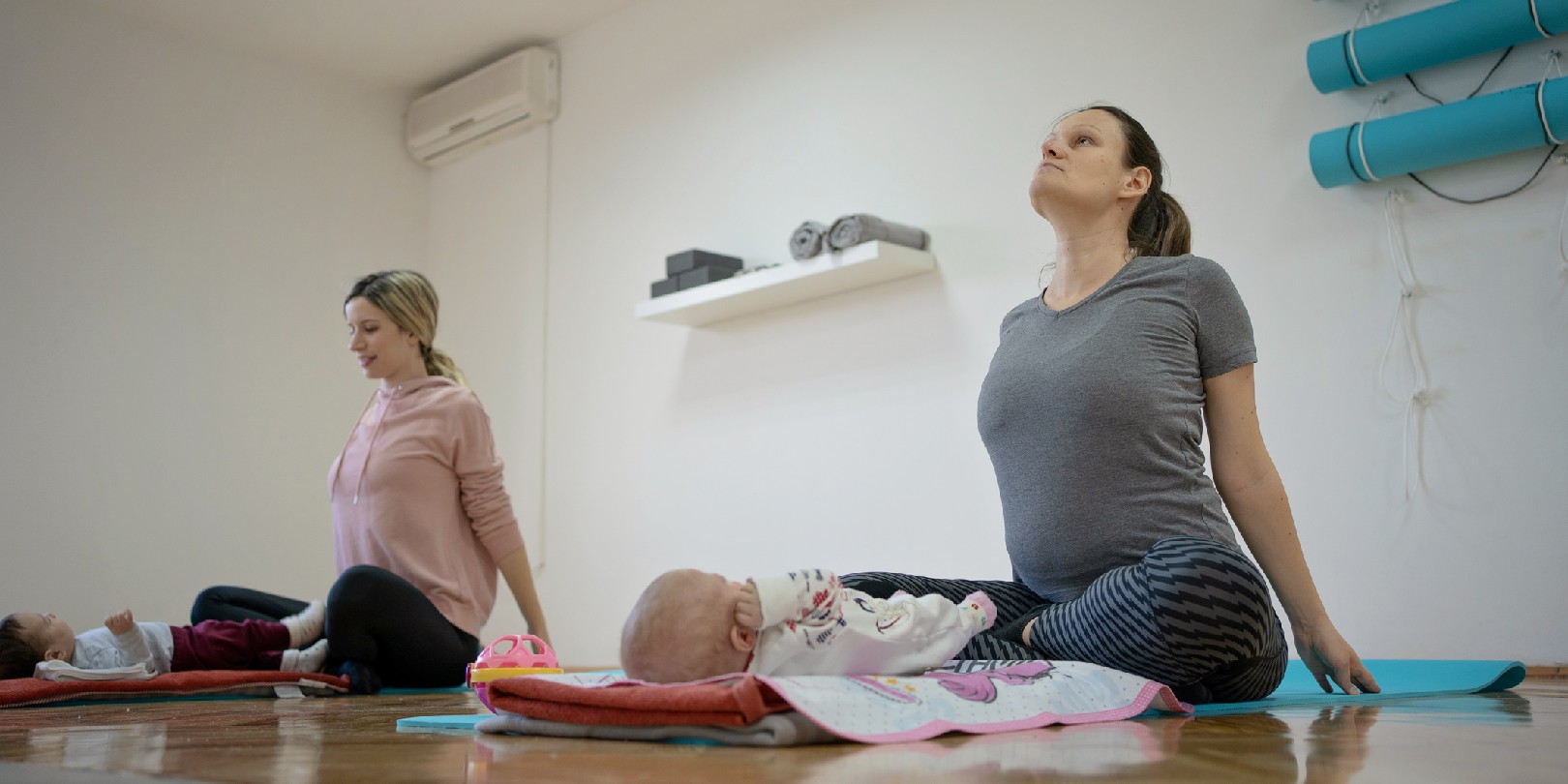3 Postpartum Pelvic Floor Exercises and Other Recovery Tips

Having a baby is a beautiful and life-changing experience, but it can also be challenging. After delivery, the process of postpartum recovery can prove long and difficult. You may need to take some precautions to ensure a smooth and healthy recovery. One of the key elements to a full recovery is focusing on your postpartum pelvic floor.
In this post, we’ll cover the basics of postpartum pelvic floor exercises, including three of the most effective exercises for new moms. We’ll also discuss other tips and tricks for postpartum recovery so that you can heal physically, mentally and emotionally.
Pelvic Floor Exercises
The pelvic floor muscles sit at the bottom of the pelvis and act as a sling to support the bladder, uterus and rectum. Strengthening these muscles can help reduce pelvic floor problems such as incontinence, weak pelvic muscles and pain during sexual intercourse.
Kegels: Pelvic Floor Exercise #1
Kegels are one of the most well-known pelvic floor exercises to help strengthen the muscles in the region. To do a Kegel, lay your back flat against a comfortable surface. Tighten your abdominal muscles, lift your buttocks slightly, then lift your pelvic floor muscles (as if you were stopping yourself from urinating). Hold for three seconds and release. Repeat this exercise 10 times each session and work up to 30-40 repetitions over time.
Hip Hikes: Pelvic Floor Exercise #2
The hip hike exercise helps strengthen and balance the vaginal area and alleviate pelvic pain caused by incontinence or other issues. To do this exercise, stand with your feet shoulder-width apart in a neutral position. Lift one hip toward the ceiling while keeping your core engaged and pushing down through your heels until you feel like you can’t go any higher. Hold for three seconds and slowly return to the starting position. Repeat 10 times on each side and gradually work toward 30-40 repetitions over time.
Bridge: Pelvic Floor Exercise #3
The bridge is a great way to strengthen your abdominal muscles and stabilize your spine, which helps support the lower back and reduces back pain during pregnancy or after delivery. To do this exercise, begin by lying on your back with your knees bent and feet flat on the ground about shoulder-width apart. Tighten your abdominal binder, then inhale deeply as you press into your feet and lift your hips off the ground until your body forms a straight line from knees to shoulders. Hold this pose for three seconds before slowly returning to the starting position. Repeat this ten times each session with an emphasis on maintaining good form throughout. Gradually work up to 30-40 repetitions over time.
Other Postpartum Recovery Tips
Adequate rest is crucial for postpartum recovery. Permit yourself to take naps when needed, even if it means postponing household chores or other obligations. Prioritizing rest will promote physical healing and support your emotional well-being.
Focus on nourishing meals that incorporate nutritious ingredients. Fresh fruits, vegetables, lean proteins, complex carbohydrates and healthy fats provide essential nutrients for energy levels and tissue repair during postpartum recovery. Remember to stay hydrated by drinking plenty of water throughout the day.
When exercising, start slowly and choose low-impact activities like walking or swimming. These exercises are gentle on the body while offering significant health benefits, such as promoting blood flow in the region. Additionally, incorporating yoga poses into your exercise routine can help promote relaxation and strengthen specific areas of your body.
Suppose you experience pain or discomfort during pelvic floor exercises or other postpartum activities. In that case, seeking professional help from a physical therapist or healthcare provider specializing in postpartum care is crucial. They can assess your needs and create an appropriate treatment plan to address any issues you may be experiencing.
Conclusion
Postpartum recovery is an incredibly important process for new mothers to focus on. Strengthening the pelvic floor is a key component in this process, and the three exercises outlined in this article are great ways to do this. In addition to these exercises, new mothers can also focus on getting plenty of rest, eating a nutritious diet, engaging in light exercise, and seeking professional help if necessary. Following these tips will help you to achieve a smooth and healthy postpartum recovery!